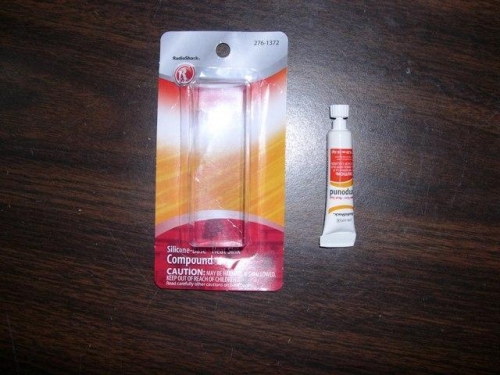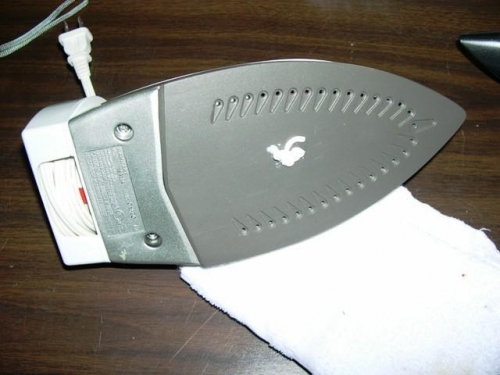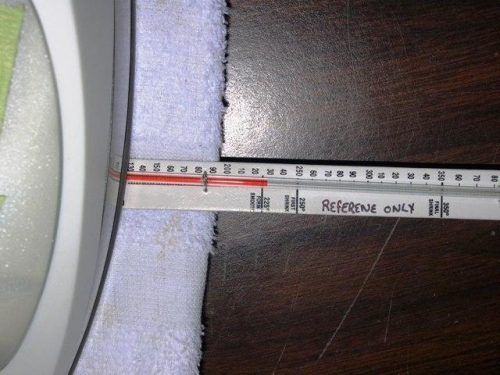
|

|
|

|
Michael Heit Excalibur Build

|
Date: 9-19-2008
|
Number of Hours: 2.50
|
Manual Reference: Poly Fiber Manual
|
Brief Description: CALIBRATION OF IRONS FOR COVERING
|

|
There has been a bit of time lag getting back to the Excalibur build; there being so many other things to get done.
Today I calibrated my four irons in preparation for covering the aircraft. The first shot shows the silicon heat sink paste I bought at Radio Shack. I have two big irons, and two small hobby irons for shrinking the fabric once it is glued to the airframe. Each iron needs to be calibrated so as to properly shrink the fabirc to the proper dimension. The reason I have so many irons is that I am teaching others how to do the covering porcess; so I have plenty of irons for every one involved.
Each of the big irons needs to be calibrated to three settings according to the fabric manual from Poly Fiber. These tempratures are [1] 225 degrees F [2] 250 degrees F [3] the final shrink temprature is set at 375 degrees F.
This will give the proper shrink of 10% as reccommended by Poly-Fiber. Some folks have said they just shrink direct to 375 degrees, however I do not reccommend this, as warping of the airframe can occur; if this happens you have no choice but to strip off the fabric, repair the damaged airframe part, and start all over again.
The hobby irons are used for the small areas to get into and smooth out the fabric as shrunk. You'll begin by shrinking the fabric overall with the big irons, and then use the small irons to smooth down the edges, and the tapes, applied later on in the covering process. The small irons are calibrated only to the first two heat settings of 225 degrees F, and 250 degrees F. I almost always use only the first heat setting when using the small irons.
Take your time when calibrating the irons, about 5 to 10 minutes of time may be needed to get the tempratures stable for an accurate calibration. In other photos you'll see the two methods that I used to calibrate the irons; in one I used a theromometer I bought several years ago from Poly Fiber; the other method I used was a laser digital temprature measuring device. The laser was much quicker and accurate.
|

|

HEAT SINK COMPOUND
|

|

A LITTLE DAB WILL DO YOU ...
|

|

THERMOMETER AT FIRST TEMP CALIBRATION
|

|
|

|

|

|
|

|

|
Copyright © 2001-2024 Matronics. All Rights Reserved.
|

